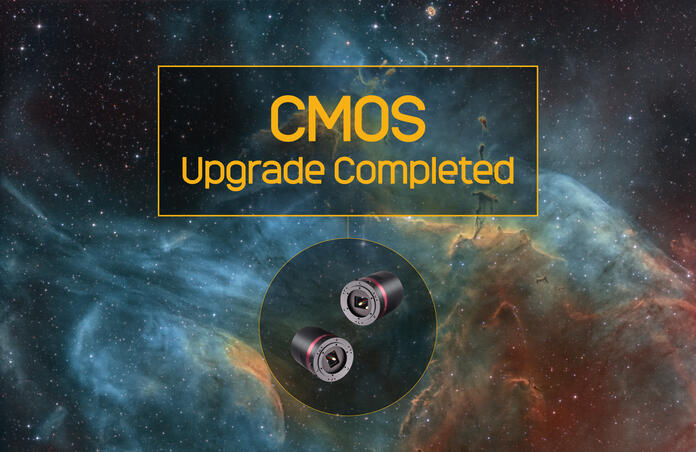Completion of CMOS Upgrade: Better Images, Technical Improvements, and a Brighter Future!

Dear Telescope Live community,
We are excited to announce that our recent camera upgrade has been completed!
As many of you know, we have been working tirelessly to transition from CCD (charge-coupled device) cameras to state-of-the-art CMOS (Complementary Metal Oxide Semiconductor) cameras for all our telescopes. This transition now provides you with higher quality images, increased efficiency, and better overall performance for our users.
First and foremost, we would like to apologize for the inconvenience caused by the longer-than-expected upgrade process.
We understand that this has resulted in fewer images being submitted during the upgrade period.
Our primary goal has always been to deliver the best possible experience to our users, and we appreciate your understanding and patience as we worked through technical difficulties in adapting our pipelines.
Despite the challenges, we are thrilled to share that we are now back in action with much better images thanks to the upgrade.
Our new CMOS cameras offer improved resolution, lower dark current, and reduced readout noise, which results in an incredible enhancement of the quality of the images you receive from our telescopes.
As we move forward, you will notice several advantages resulting from the CMOS upgrade, as well as important technical changes we have implemented.
For those most passionate about technical aspects, here's what you need to know about this upgrade and how it will affect your overall experience with Telescope Live.
CMOS Camera Specification
Below are the specifications of all the cameras currently installed on our network:
Model: QHY 600M Pro
Pixel Size: 3.76s μm
Pixel Array: 9576 x 6382 pixels
Renaming the telescopes, datasets, and bundles
As we embrace this new era of astrophotography, we have also made necessary adjustments to our platform.
To simplify the transition, we have renamed our telescopes by adding a suffix to their names.
For instance, CHI-1-CCD refers to images acquired with CHI-1 using the old CCD, while CHI-1-CMOS refers to images acquired with CHI-1 using the new CMOS cameras.
Observation Bundles will also be separated based on the type of camera used, ensuring a seamless experience.
Default Binning Changes
To achieve an ideal pixel scale and avoid oversampling the point spread function (PSF) of stars, we have changed the default binning for long focal length telescopes.
The default binning for CHI-1-CMOS is 2, while the default binning for SPA-2-CMOS is 4. This corresponds to a plate scale of 0.39''/px for CHI-1 and 0.55''/px for SPA-2.
These are ideal pixel scales considering the average seeing in Chile and Spain. All other telescopes will run at full resolution (i.e., no binning).
Disabling Autoguiding
We have decided to switch off guiding on all telescopes due to the challenges it presented.
Automating consistent guiding is incredibly difficult, especially for long focal length telescopes with a narrow field of view for the guider. It also created significant overhead when dithering, as the guider had to be reinitialized at every new position.
That's why we have chosen to rely on the tracking capability of each mount and disabled autoguiding.
Adjusted Maximum Exposure Times
Without guiding, we have to rely on the tracking capabilities of the mount, and this implies reducing the maximum exposure time for each image.
Thanks to the new CMOS cameras' low readout noise and short overhead for each exposure, this is not a problem.
The maximum exposure times are now 300 seconds for SPA-1, AUS-2, and CHI-1, and 120 seconds for SPA-2. In the case of SPA-2, we are working hard to improve the pointing models to increase the maximum exposure time allowed.
Increased Efficiency
Last but not least, these changes have resulted in an almost 40% increase in efficiency, allowing us to generate more data than ever before!
We would like to extend our heartfelt gratitude to our loyal community for your unwavering support during this transition.
We believe that the CMOS upgrade marks a significant milestone for Telescope Live and our users, paving the way for a brighter and more exciting future in astrophotography.
Thank you for being a part of our journey, and we can't wait to see the stunning images you will capture with our upgraded cameras!
Clear skies!
Marco
Founder



